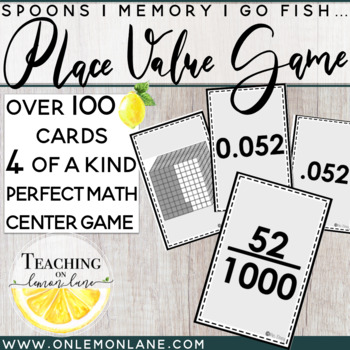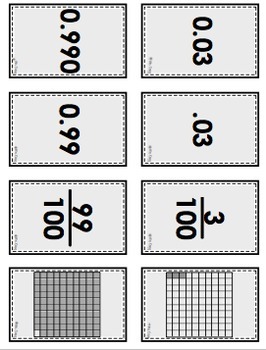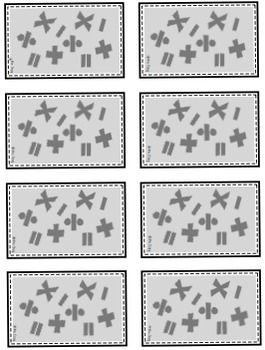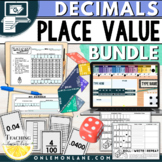Place Value Models Game Matching Card- Thousandths, Fractions, Writing Decimals
- PDF
What educators are saying
Also included in
- ✨4th & 5th Grade Place Value Activities & Games ✨ Looking for a FUN way for 4th & 5th grade students to practice place value? This bundle includes a fun variety of place value games, worksheets, puzzles, digital activities...etc! Students will practice writing numbers in standard formPrice $22.07Original Price $44.04Save $21.97
- ✨5th Grade Place Value Activities✨ Looking for a FUN way for 5th grade students to practice reading & writing decimals place value? 5th Grade Students love the fun range of place value activities, games, and worksheets. Practice writing numbers in standard form, unit form, expanded form, & wPrice $14.97Original Price $26.56Save $11.59
Description
✨Looking for a FUN 5th Grade Place Value review game activity that's perfect/appropriate for Upper Grades or your older students?✨ (Upper Elementary, Middle School, High School or Secondary) This Place Value card game is a great way to learn about Tenths, Hundredths, Thousandths, writing decimals, base ten models, fractions, and setting up place value models. Flexible math review game to play with spoons, memory, go fish, kemps, etc.
I needed a fun review game for my 5th grade students that would solidify their knowledge of place value, and how to represent decimals to their equivalent base ten models, and fractions. I also wanted them to practice applying the idea that the value of the decimal doesn't change if zeros are added to the right or left of the decimal. I thought what better way to review these concepts with my kiddos than a card game. This download includes 56 cards, 4 matching cards per set. We will be using these cards to play spoons, but you could also use them to play memory, go fish, kemps...etc. These cards could also be used as a review game in math centers, rotations, reteach and enrich...etc. Let me know how you used these fun cards, and if your students even realized they were learning! As always I love your feedback, THANKS!
This printable can be printed double sided, or simply one sided. Laminate to use over and over again:)






